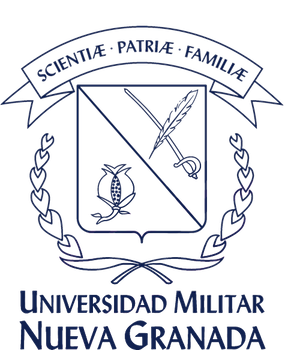Dimentional optimization of a Delta parallel robot based on a lower energy consumption
Abstract
This paper presents an optimal dimension estimation of a Delta parallel robot based on a lower energy consumption. It also presents the description of the experimental platform, kinematic and dynamic analysis. The optimization algorithm (genetic algorithms) takes into account restrictions, such as covering a semi-spherical workspace with a specific radius and the interference analysis.Downloads
Languages:
esReferences
Baykal S. G., (2010). Green Automation, Automatica 2010, International Trade Fair for Automation and Mechatronics.
Albers, A. and Ottnad, J. (2009). Integrated structural and controller optimization for lightweight robot design. Humanoid Robot 9th. IEEE-RAS International Conference, pp. 93 -98. http://dx.doi.org/10.1109/ichr.2009.5379593
Bailon W., Cardiel E., Campos I. y Paz A. (2010). Mechanical energy optimization in trajectory planning for six DOF robot manipulators based on eighth-degree polynomial functions and a genetic algorithm. Electrical Engineering Computing Science and Automatic Control (CCE), 7th International Conference, pp. 446 -451.
Kolibalbal Z., and Smetanova A., (2010). Experimental implementation of energy optimization by robot movement. Robotics in Alpe-Adria-Danube Region (RAAD). IEEE 19th International Workshop, pp. 333 -339. http://dx.doi.org/10.1109/RAAD.2010.5524564
Vergnano A., Thorstensson C., Lennartson B., Falkman P., Pellicciari M., Yuan C., Biller S. y Leali F., (2010). Embedding detailed robot energy optimization into high-level scheduling. Automation Science and Engineering (CASE), IEEE Conference, pp. 386 -392. http://dx.doi.org/10.1109/coase.2010.5584686
Merlet J. P., (2006). Parallel Robots (Solid Mechanics and Its Applications), New York: Springer-Verlag.
Ranky P.G., (2010). Sustainable green product design and manufacturing / assembly systems engineering principles and rules with examples. Sustainable Systems and Technology (ISSST). IEEE International Symposium. http://dx.doi.org/10.1109/ISSST.2010.5507706
Zhi-Gang Xu, Li-Yan Shen, Wen-Guang Chen, (2006). Conceptual Green design, challenge and strategies.Industrial Electronics. IEEE International Symposium. http://dx.doi.org/10.1109/isie.2006.296081
Glantschnig W.J., (2002). Green design: an introduction to issues and challenges. Components. Packaging and Manufacturing Technology. Part A, IEEE Transactions.
Liu X.J., Jin Z.L., and Gao F., (2000). Optimum design of 3-DOF spherical parallel manipulators with respect to the conditioning and stiffness indices In: Mechanism Machine Theory 35, pp. 1257- 1267. http://dx.doi.org/10.1016/s0094-114x(99)00072-5
Clavel R., (1989). Une nouvelle structure de manipulateurparallèle pour la robotiquelégère. Journal Européen des SystèmesAutomatisés, 23 (6), pp. 501-519.
Lou Y., Liu G., Chen N., and Li Z., (2005). Optimal design of parallel manipulators for maximum effective regular workspace, Proc. IEEE/RSJ Int. Conf. on Intel. Robots Sys., pp. 795-800. Alberta.
Qiaoling Yuan, Shiming J.i., Zhongfei Wang, Guan Wang, Yuehua Wan, Li Zhan, (2008). Optimal design of the linear delta robot for prescribed cuboid dexterous workspace based on performance chart. Proceedings of the 8th WSEAS International Conference on Robotics. In: Control and Manufacturing Technology, p.35-41, Hangzhou, China.
Courteille E., Deblaise D., and Maurine P., (2009). Design optimization of a Delta-like parallel robot through global stiffness performance evaluation. IEEE. In: Intelligent Robots and Systems, 2009. IEEE/RSJ International Conference. http://dx.doi.org/10.1109/iros.2009.5353906
Stock M., and Miller K., (2003). Optimal design of spatial parallel manipulators: application to linear DELTA robot, In: ASME J. Mech. Des., Vol. 125, pp. 292-301. http://dx.doi.org/10.1115/1.1563632












